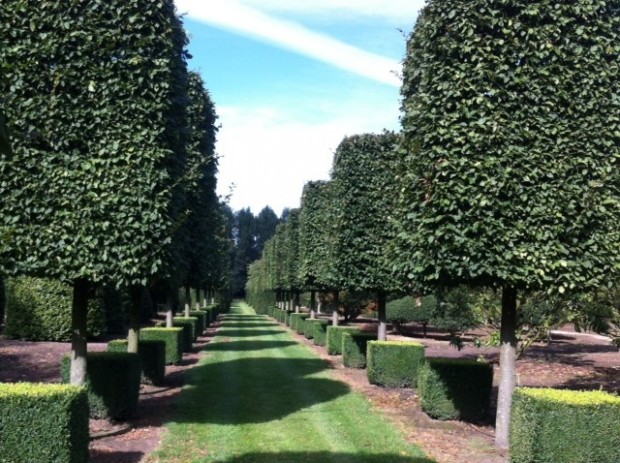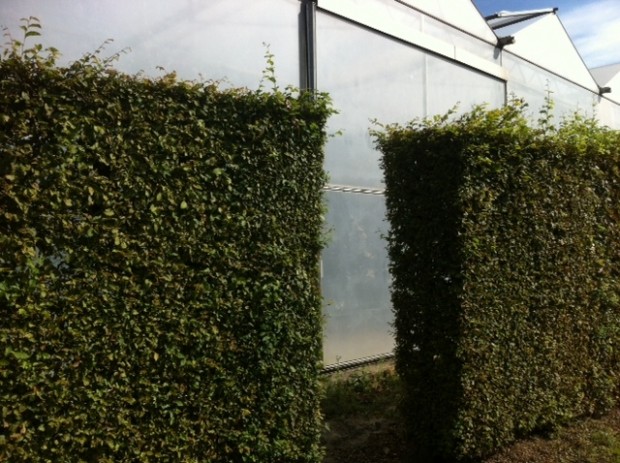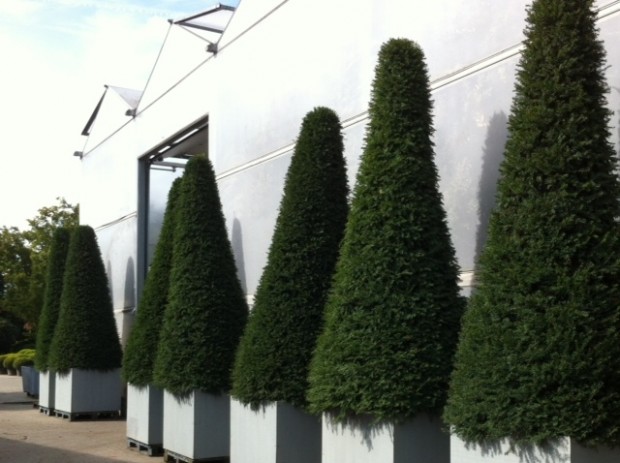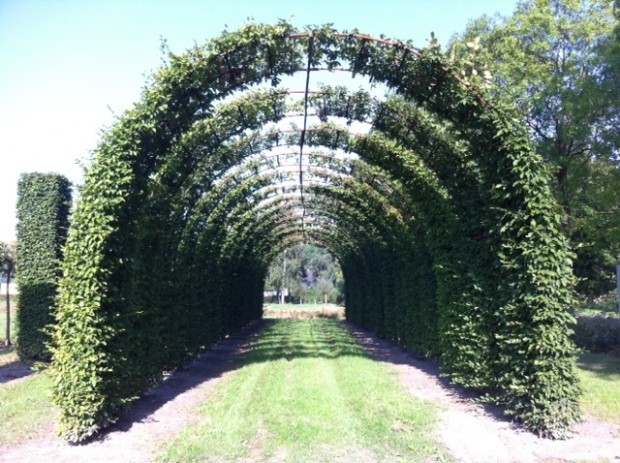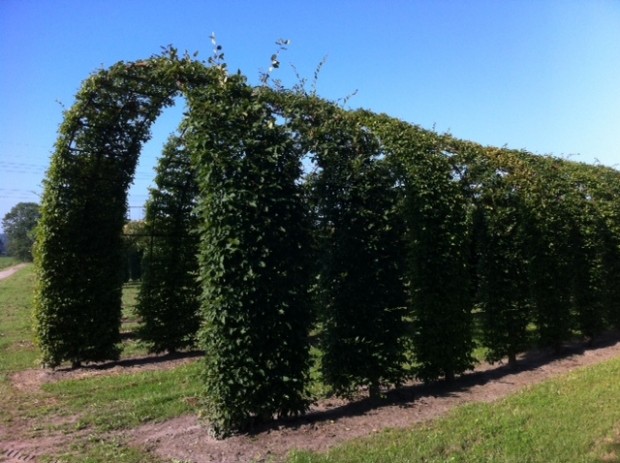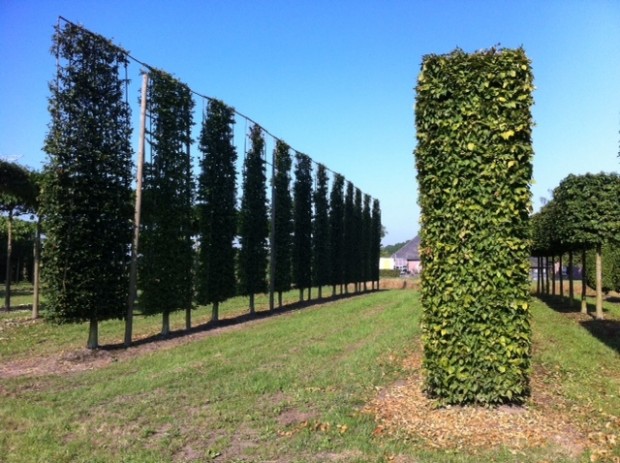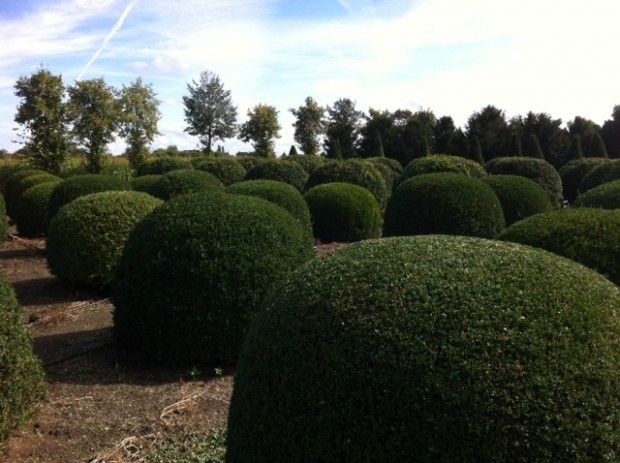
I fancy myself a gardener. That is, my life revolves around making things grow. A landscape design evolves from an idea, to a schematic plan, to a garden that gets planted. Once it is planted, there is a gardener who will see that it grows. A small tree grows up, and creates an atmosphere all its own. A perennial garden takes hold, gains weight, and blooms. Pedestrian ideas die on the vine, and are replaced by those that have lively quality to them. Those who grow-I instantly think about all of the gardeners it has been my pleasure to meet. But those who grow professionally are gardeners of a different sort. What and how they grow is not only an inspiration to gardeners. From start to finish, the life of a landscape is the story of its plants. Outstanding plants are not only irresistible, they are unforgettable.
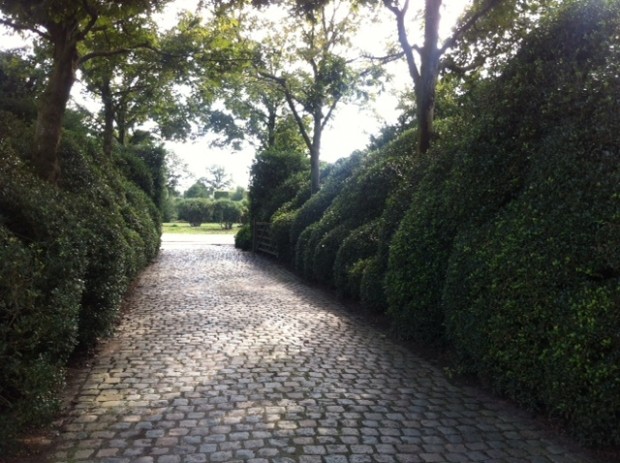
The entrance to this nursery speaks volumes to the point of view of the grower in charge. The paving stones set horizontally in the drive are an invitation, a request to slow down. The cloud-pruned yews spilling over the edges of the drive-stunning.
This nursery is devoted growing a select group of plants. Woody plant material painstakingly pruned into shapes. Not every plant responds to shearing. This gardener has a special interest in those plants that handle this kind of pruning with aplomb.
These plants are beautifully grown. They are spaced such that every one gets its fair share of sun and air. Each boxed tree matches its neighbor-the branching is the same distance from the ground from the first to the last. Each box is pruned to the same size, tree after tree. The boxwood cubes are no different. The size and shape is utterly uniform. Alternately the trees and the shrubs is not only exquisite to see, it makes the most efficient use of the space. 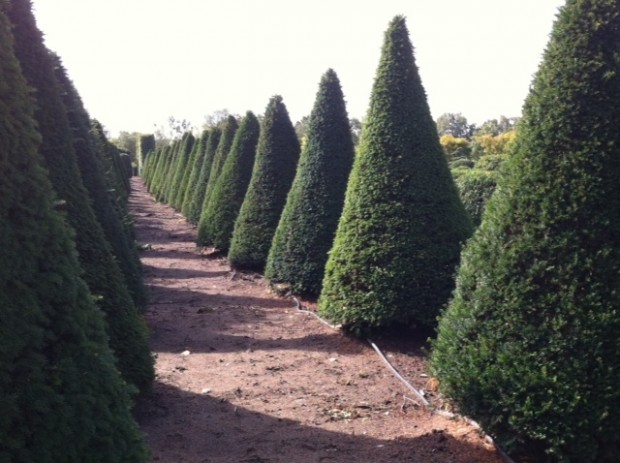
Growing yews like this takes many years, enormous skill, and incredible patience. Unlike a nursery where the stock turns over quickly, this grower has invested lots of time and a lot of land to the cultivation of a few great plants.
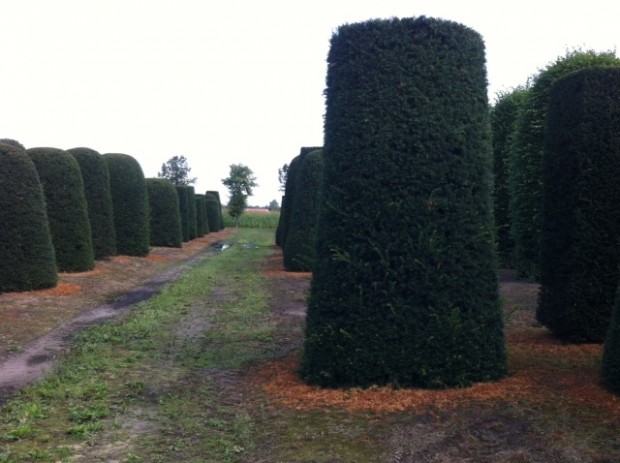
Even in climates with long growing seasons, plants of this stature take years to grow. The pruning is an ongoing process, a little at a time. The yew clippings on the ground-no longer than 6 inches. Even the clippings are uniform in shape and length.
Some of the hedging plants are grown in sections. I am sure when the section is dug, each individual plant is labelled as to its position in the row. The overall shape made by the group-striking.
A collection of individual specimen evergreens grown in boxes makes the transportation to a new home somewhat easier. Just to speculate about what one might do with one, or two, or 4 plants of this caliber-a pleasure.
These carpinus are being trained into arched shapes. The fact that they have foliage all the way to the ground suggests that the training began when they were very small plants. Trees in ground like this are regularly root pruned, which makes the task of transplanting easier. Pruning the roots means a dense fibrous mass of roots will help keep the root ball intact when a plant is dug. Though it may seen counter intuitive, moving a tree the first time is the most harrowing move of all. The roots that get cut eventually sprout multiple roots at the cut. Every successive move is easier, as the development of a dense root system aids in the transplant process.
The ability of a plant to make densely fibrous and compact rootballs plays a large part in whether it is commercially grown. Certain types of junipers are difficult to transplant, as their rootballs have a tendency to collapse. Even container grown roses need to be transplanted with great care, for the same reason. These topiaries and espaliers are grown from just a few species-yew, boxwood, carpinus, and beech.
I think all of these plants are beautifully sculptural-I would have any of them. But whether or not formally pruned trees appeal to you or not, the care, committment and vision with which they are grown is obvious. Yes, these trees are expensive-just any other gorgeous one of a kind sculpture. Where do you find trees like this? Anywhere you find a grower with a big love for growing. No small part of their beauty is how they suggest that any gardener with a small plant and an equally big love for growing could create one of their own.

